 Pardon the rough edges
Pardon the rough edges
 Pardon the rough edges
Pardon the rough edges
Anza-Borrego Desert State Park, east of the Cuyamaca and Laguna ranges which separate it from San Diego, is a picturesque desert with panoramic views, breathtaking canyons and other-worldly badlands.
We visited the desert around Easter, 1996. Comet Hyakutake was in the skies at that time and the viewing conditions couldn't have been better.
We entered the desert via the awesome road which descends from Highway 79 near Warner Springs to Borrego Springs.
After looking through the excellent visitors' center in Borrego Springs, we decided to start our exploration in the badlands in the northern part of the desert. Here is what we saw from the Font's Point overlook.

Here's another view:
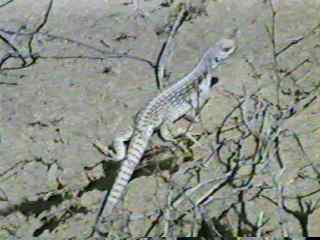 A Badlands regular
A Badlands regular
We descended into the Badlands. There are some roads which snake through the maze of mud hills. We saw a couple of small palm oases.
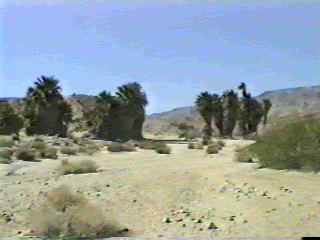
This area is known as "Seventeen Palms", although I counted about 26. Guess the palms must be doing good to be reproducing here. The only evidence of water here, other than the palms, was a small dug-out which gave a look at a small amount of putrid stagnant water.

In the middle of the grove there is a small barrel with a logbook where visitors can leave their thoughts on what they experience there. I copied one of the entries, and will reproduce it here when I find it!
Here are a couple more "oases". It was unreal to see these big, green palms in the middle of this dry, inhospitable landscape. The paradox was enhanced by the fact that it had been a relatively dry winter.
 A lone palm (at least 1/2 mile from any other)
A lone palm (at least 1/2 mile from any other)
A grouping of three palms
We set up camp near the Yaqui Pass. That night we saw some strange lights off to the northeast, towards Salton Sea. They were stationary on the ground, but they seemed to get really bright and then dim.
Here is a view from the campsite the morning after.

Mari didn't want to get up! 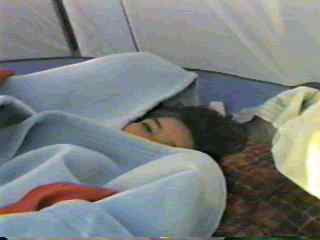
I went out on one of my customary morning hikes while Mari woke up. A few arroyos over from the main road I found this weird thing:

In the small enclosure (adorned with a clock face, of all things) were folding chairs, a shovel, some other implements, a can of (very spoiled) gasoline, and a few other odds and ends. The mailbox contained some notes from previous visitors. We left a few notes of our own.
After packing we headed down to the south-central part of the park, after filling our tank at a hole-in-the-wall gas station for $1.69 a gallon.
We stopped at the Blair Valley area, once popular with Indians. The area was very rocky.
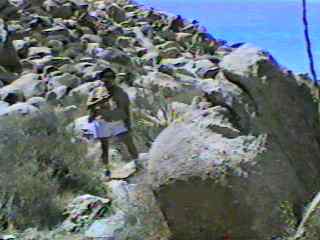
A "petroglyph". I don't think it was authentic. The paint was relatively
fresh.
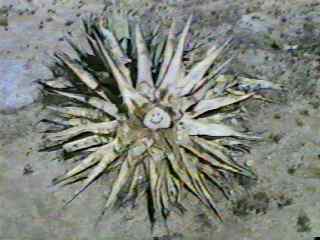 Charles Kuralt would have liked this yucca
Charles Kuralt would have liked this yucca
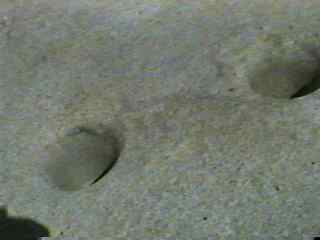 There were a few "metates", evidence of an Indian settlement.
There were a few "metates", evidence of an Indian settlement.
We decided against hiking up the massive Ghost Mountain to see the homestead of Marshal South, who lived there with his family during the 1930's and 40's..
Further south, we went down ___ Canyon. The Palm Spring was by far the best oasis we saw in the park. We observed endangered pupfish in the pond.
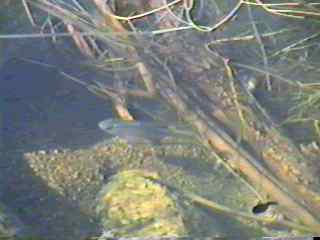
We then headed up picturesque ___ Canyon.
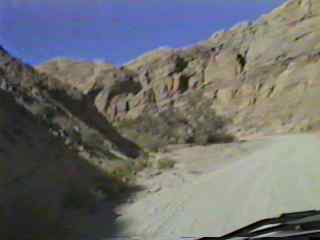
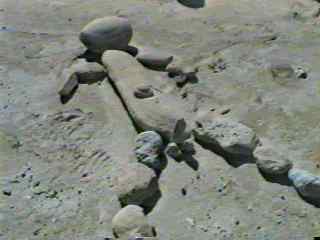
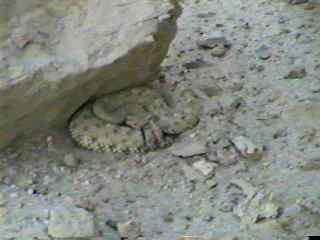
I got pretty close to being "nailed".You can make out the footprint of my boot to the right of the frame. Needless to say, I now carry a first aid kit which includes the "Sawyer Extractor", the only venomous snake-bite implement approved by the experts.
As we progressed the canyon walls grew shorter and shorter, until we emerged on a small plain.
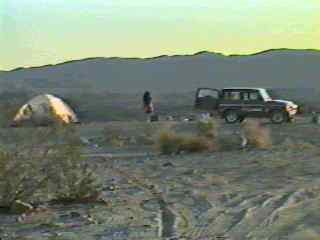
We set up for the second night at the rim of a gorgeous canyon overlook. This time we didn't see any lights - just a spectacular uninhibited view of the cosmos and the Hyakutake comet.
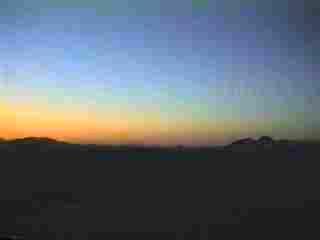 A gorgeous end to a gorgeous day
A gorgeous end to a gorgeous day
View from camp the next morning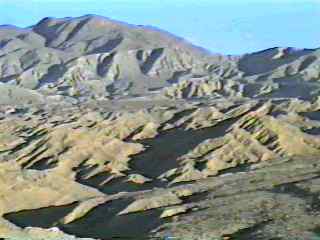
We went down the canyon and back home. We stopped at the folks' house and found that Cheryl had brought us a cute little Easter basket!
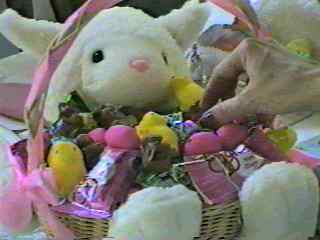
Thus ended our journey through the Anza-Borrego.